
Happy Sunday! We’re back with a new issue of the Animation Obsessive newsletter. And here’s the game plan:
1️⃣ Talking screenwriting with Tommy Swerdlow (Puss in Boots: The Last Wish).
2️⃣ Animation news from around the world.
We offer both free and paid subscriptions. You can sign up for free to receive our Sunday issues right in your inbox — or make the jump to paid for our Thursday issues:
With that out of the way, we’re off!
1: Swerdlow on screenwriting
The art of screenwriting for animation doesn’t necessarily draw headlines. So many steps come after it — storyboarding, animating and beyond. A script may, in the end, play a tiny role in an animated film or series. Certain projects don’t use them at all.
And yet words on a page have led to some of the most famous scenes in animation. When you read Bill Oakley’s original draft for that one Simpsons skit, you realize how much of the magic was already there. A good script can influence the whole flow and feel of a project — and a weak script, a bad story, can ruin the work of the greatest animator.
Recently, we had a conversation with Tommy Swerdlow, a Hollywood veteran, about animated screenwriting. Swerdlow first got known in live action, writing for films like Cool Runnings (1993) — but he was involved in the early stages of Shrek, too. His latest credit is Puss in Boots: The Last Wish (2022), co-written with Paul Fischer. That film frames our chat below.
Swerdlow is a fellow Substack writer, publishing a newsletter called
even as he continues his work in Hollywood animation. In the middle of his busy schedule, he was kind enough to answer our questions about his time on The Last Wish, and about screenwriting for animation in general.Our exchange, lightly edited for formatting and clarity, follows.
Animation Obsessive: How did you get attached as a screenwriter on the Puss in Boots sequel?
Tommy Swerdlow: I was put on Puss after I finished The Grinch (how that came to be is its own interesting story, because at first I was just asked to do a little Seuss whispering and help with the rhyming narration). The executive producer on Grinch, Latifa Ouaou, had worked on the first Puss, and we wanted to work together again, and Chris (Meledandri) thought it was the right thing for me to do next. I have a history with the franchise, and my partner Michael Goldberg and I were the very first writers on the original Shrek, so I was eager to get back in there. And it’s always fun to write with Antonio Banderas’s voice in your head. I worked from Tom Wheeler’s (the writer on the first film) concept, that Puss was down to his last life, which of course is great and makes the movie what it is.
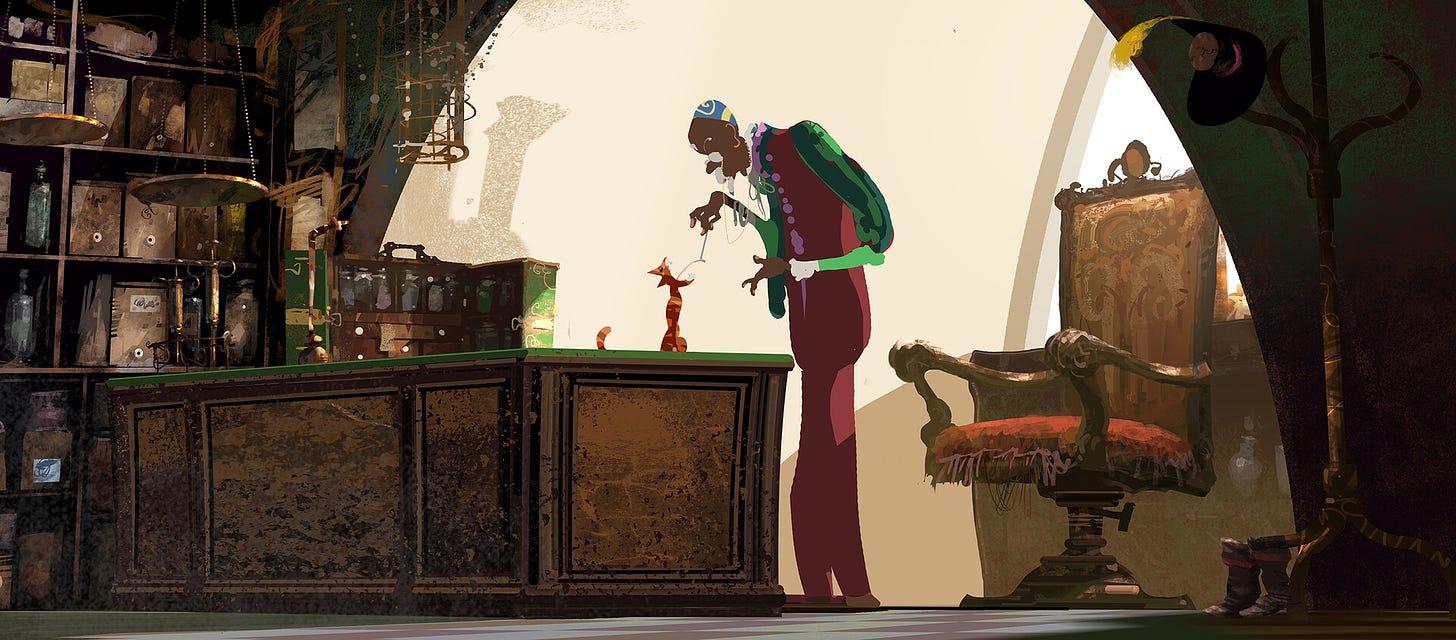
Animation is often seen as a visual medium, and the role that writing plays in it isn’t always appreciated. How does a screenwriter help to define an animated film?
These days you write an animated film like you would any other, at least the early drafts. They may have some visuals for the characters or they may not, but you are not dealing with the director yet, at least that’s my experience. To your point of animation being a visual medium, it’s very true — to the point where I don’t even work through the Writer’s Guild when I write animation, I had to join the Animation Guild. I imagine back in the day the artists drove everything, story included, and whatever dialogue was there as well. Also I think of the huge role that music plays in a lot of those films, like Jungle Book, with the songwriters really doing a lot of the storytelling.
The most interesting thing to me is how much things change once there are storyboards. You have no idea what you really have until you see the boards, and then you’re like, “Oh, my scene stinks, I thought it was great when I wrote it!” Also, the storyboard artists take the opportunity to test out their screenwriting skills, especially their joke lines, so you can end up watching something that’s gotten a good working over. Quentin Tarantino would not like it at all!
What was the writing process like on The Last Wish?
The writing process on Puss was just me doing my thing, but that changed a lot when Bob Persichetti (one of the directors on Spider-Verse) was hired. I’m sure your more fanatic subscribers know who he is. Bob had a strong vision and great story ideas, and a lot of the movie’s visual signature remains even though he eventually passed the baton off to Joel Crawford. I know certain reviews compared it visually to the Spider-Verse flick. I worked on Puss for two years, then passed off to Paul Fischer, then came back a bit with Paul (but working separately), then passed it back again for the final stretch. Paul, and of course Joel, did a great job. They worked well and quickly.
You’ve worked on the screenplays for both live-action films and animation. When you’re writing an animated character, do you approach it differently than you would a real person?
The difference to me writing live action and animation is not that great because I have a background in family films and storytelling is storytelling. But there is a certain combination of great imagination and vitality, along with reductive clarity, when animation writing is at its best, and that is not easy. Also there is a difference in creating a character and writing Puss, who is already created and people think they know, and have definite ideas about, and by “people” I mean producers, directors, studio executives, development people. When you write a character from scratch, no one says to you, “No, they would never do that!” They may not like it, but they don’t say that.
I have taken your question and turned into the difference between writing an original and a sequel. Back to your first question. Good storytelling is good storytelling, no matter live action or animation. But I think it is much harder to make a good animated movie than a good live-action one and I could explain why, but I won’t.
How can you tell when an animated script is finally “working” — and is it the same feeling as it is with a live-action film?
The script I’m working on now (Shrek 5) just started to feel like it was working. That to me means there is a story that has momentum and emotional logic. My writing is pretty good, and my scenes usually have life and are funny, but none of that matters if the container itself is not the right container. The story is the container. The scenes and dialogue, jokes and “business,” are the stuff in the container, and they inform each other. That may sound a little abstract but it is true.
But writing a good animation script is a much smaller part of the equation of a good final product than it is in live action. So much can go wrong in animation. The script is a big deal but the visuals a bigger deal, and voice acting is just as important as live acting if not more. Everything has to work together for it to swing: the writing, the visuals, the performance, the editing. And when animation goes dead it goes dead-dead, no living actor up on screen breathing.
As a Hollywood veteran, you’ve seen firsthand how the industry’s evolved over the past few decades. Has the job of a screenwriter changed since the days of Cool Runnings?
The screenwriter job has changed because they don’t make a lot of movies anymore, they make TV, and TV writing is way, way, way different than movie writing. Been a lot of great show creators and TV geniuses who have struggled with movies. Not a lot of James L. Brooks’s in the world. Animation is one of the last places movies are consistently made, along with action and horror and a few other genres.
I have definitely noticed a style with young animation writers, which I call the Family Guy effect. They’re more interested in the inventive momentary gag than what it means for the story. When you have a character do something in act one, you need to have acts two and three in mind. If you’re able to hold a whole movie in your head as people give you notes, then you’re doing the gig at a high level. But you have to be able to write too. A quarterback can’t just read the defense, he also has to make the throw.
Lastly, was there an especially standout scene for you in the script to The Last Wish, and did it make it to the screen as you imagined it?
I loved Puss’s anxiety attack. Wrote ten versions of that scene and none of them made it to the film, but the scene did and the feeling of it, and I know it is one people really enjoyed. I always wanted to write a speech for Puss where he said, “I know what it is to be human now” — a speech where he had been humanized by the story, realizing he would now have to finally live the way we all must.
Our thanks to Swerdlow for his time and courtesy. Again, you’ll find more from him via his Substack newsletter,
.2: Animation news worldwide
What a viral music video says about Chinese animation today
Earlier this month, the music video for a song called The Ostrich Has Run Away went viral on Weibo — a Chinese social media service that’s like Twitter but much, much bigger. Within a day, it broke 10 million views on the platform.
A report by Anim-Babblers, one of the foremost Chinese animation outlets, makes it clear that this success needs to be taken seriously. It represents a win for the indie animation scene in China — a small, tight-knit group that battles studio blockbusters for attention, despite little outside support. This time, it broke through.
The Ostrich Has Run Away is an alt-rock song by Chris Lee, the stage name of singer Li Yuchun. She’s famous in China, steadily releasing albums since the mid-2000s. This new track focuses on an incident that took place in Anqing back in 2021, when an ostrich escaped its enclosure and ran through the city. It traveled over 12 miles and became a social media sensation in China, only to die tragically of exhaustion.1
Between fuzzed-out cries of “the ostrich has run away” (tuóniǎo táopǎole), Lee uses this event to take a biting look at Chinese society, at the ostrich’s blind rush to freedom and at the social media frenzy surrounding it. The music video backs it up with bold, striking, black-and-white graphics and collage, showing an age of information overload — but always returning to that image of the running ostrich at the center.
The video comes from a young director named Shui Yuan, a member of the Chinese animation underground. Until now, she was best known for her graduation film Broken Potato (2021), another black-and-white piece heavy on collage and social commentary. With this new video, she’s taken her style to another level.
Shui has ties to Feinaki Beijing Animation Week, an annual event that’s quickly become the indie animation hub in China. Per Anim-Babblers, it was Shui’s contacts at Feinaki who recommended her for the Ostrich Has Run Away job. Yantong Zhu, the artistic director of Feinaki and a former student of Japanese animator Koji Yamamura, was a producer on Ostrich.2
Which is to say that the video for The Ostrich Has Run Away has serious underground credentials. And yet it was a hit with the public. The writer for Anim-Babblers sees hope here: the Chinese mainstream is finding that “maybe independent animation is actually not ‘difficult to understand’ ” like its reputation suggests. Find the video below:
Newsbits
We lost American artist and producer Ken Mundie (97), who worked with everyone from Walt Disney to Richard Williams to Friz Freleng.
Japanese director Kenji Iwaisawa (On-Gaku: Our Sound) has a new film coming: Hina Is Beautiful, written by the screenwriter of the Oscar-winning Drive My Car.
American animator
wrote a very valuable article on We Have Met the Enemy, and He Is Us (1971) — an animated film by Pogo creator Walt Kelly.In France, Annecy revealed the projects at its MIFA pitch market this year. Among the highlights are La Petite Cavale, by the director of Shooom’s Odyssey, and the American-Congolese-Japanese co-production Mfinda. The latter is being co-directed by anime veteran Gisaburō Sugii (Night on the Galactic Railroad) and Arthell Isom, who runs Japan’s “first Black-owned anime studio.”
Also in France, data shows that animation makes up “10% of the country’s whole audiovisual industry but is worth over 40% of the [overall] exports.” It’s growing fast. As Cineuropa points out, “The total payroll accounts for €205.1 million, and this figure has doubled over the last ten years.”
The Spanish film Mummies (Momias) has now earned more than $50 million worldwide, on a budget of $12 million. That makes it Spain’s second-biggest animated feature to date, behind Planet 51.
The filmed version of Spirited Away: Live on Stage premiered in American theaters today. Charles Solomon had a great talk with director John Caird about the making of the show.
An American short we liked: The Possibilities of Regeneration, released this week.
In China, the anime film The First Slam Dunk became a hit when it opened on Thursday, with a day-one take of $13.8 million. It broke 300 million yuan ($43.5 million) in three days, and is forecast to reach 900 million during its run.
You may have read that the Japanese director Rintaro is back with a new anime film. Anime News Network offers a great, deep explainer on the project.
In America, artist Nick Cross (Over the Garden Wall, The Clockwork Elves) posted a 42-minute video showing his painting process for animation backgrounds.
Lastly, we took an extensive look at the story of Chinese animation during the Cultural Revolution. It’s the worst oppression animators have ever faced — but, somehow, the workers of Shanghai Animation Film Studio persevered.
Until next time!

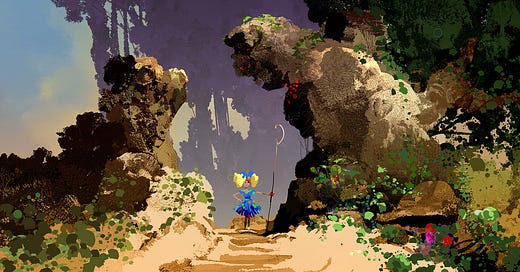

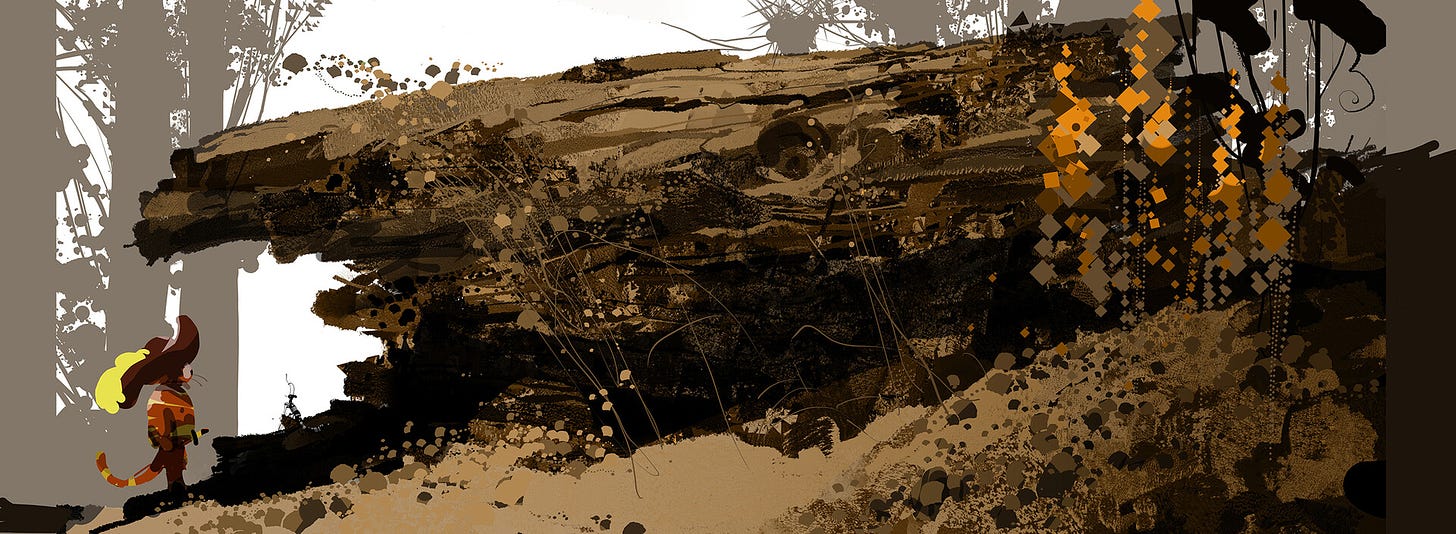
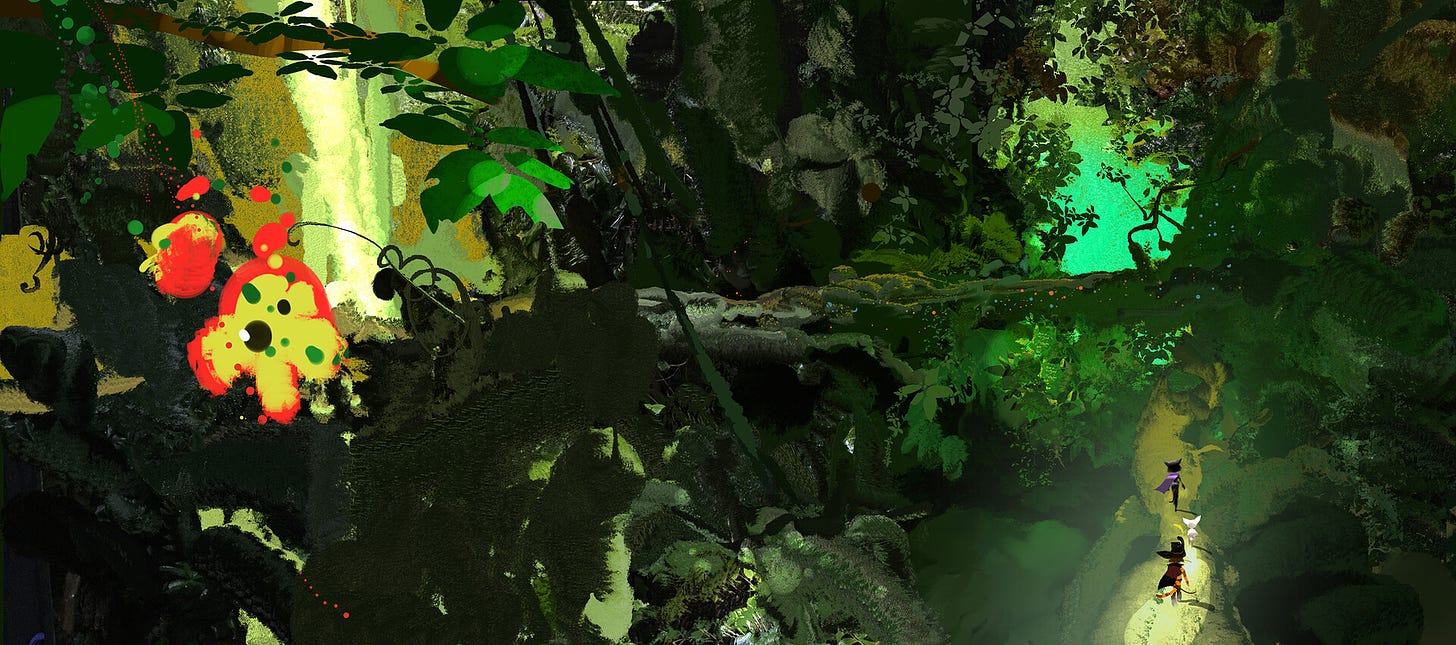
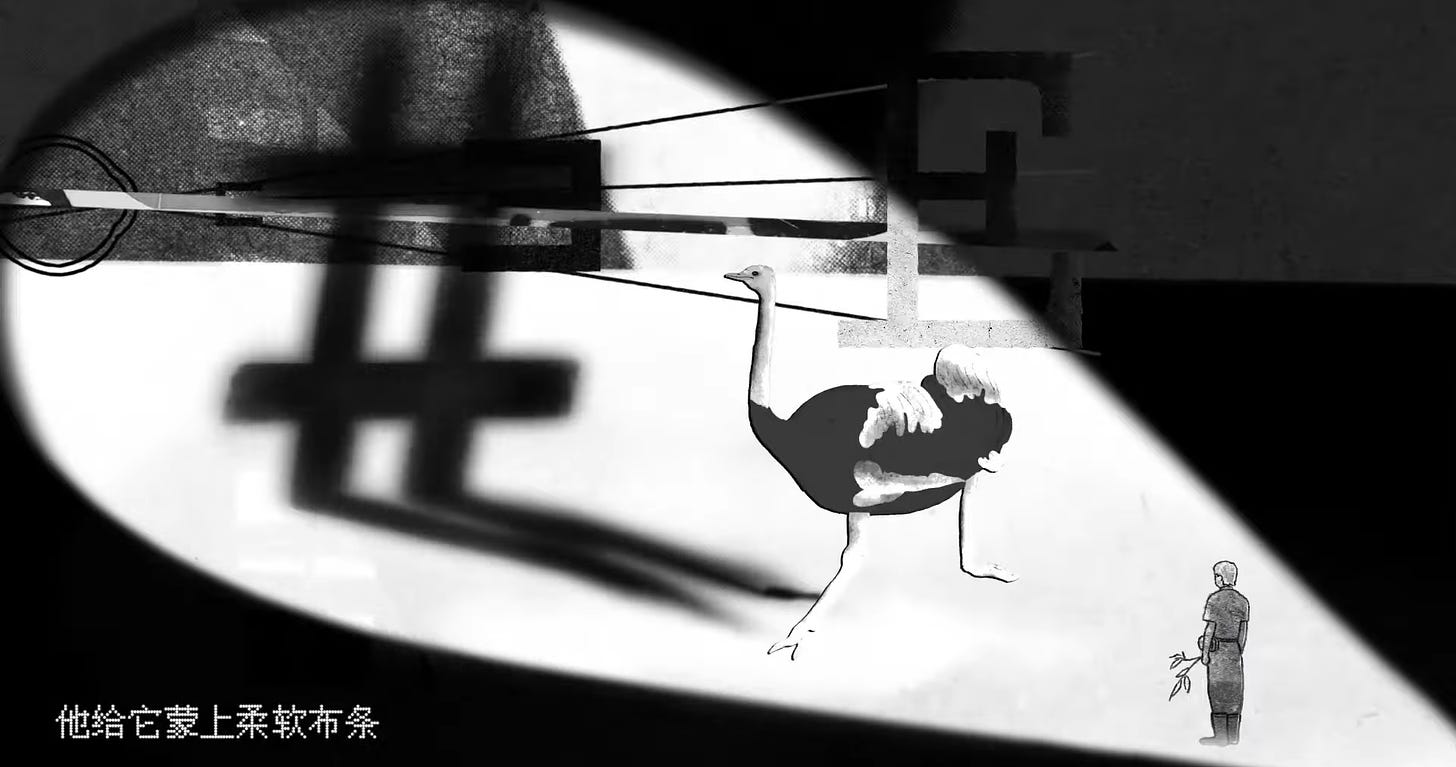
Another great post. The detail is, as ever brilliant.